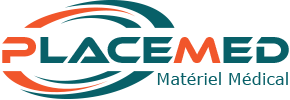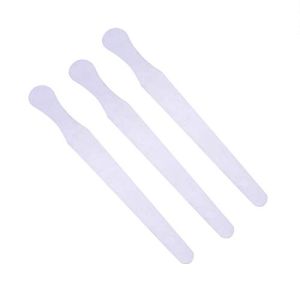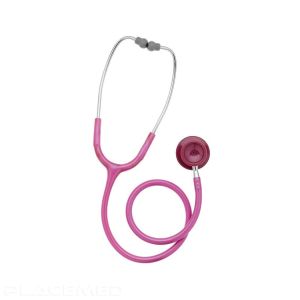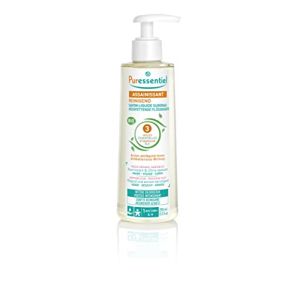Choosing Non-Slip Medical Shoes: What You Need to Know
Selecting medical shoes is not just about aesthetics. It's a critical element in ensuring the safety, comfort, and efficiency of healthcare workers. Slips and falls are constant risks in hospital environments. So, how do you choose the right non-slip medical shoes? This comprehensive guide provides all the essential information to help you make the right choice.

1. The Risks of Slipping in Medical Environments
Healthcare facilities are dynamic environments where staff are constantly on the move. Floors can be wet or soiled with various liquids such as water, blood, or chemicals. These conditions greatly increase the risk of slips and falls.
A fall can have serious consequences for both healthcare professionals and patients. In addition to physical injuries like sprains or fractures, a fall can lead to work interruptions, affect the quality of care, and incur additional costs for the facility.
2. The Importance of Non-Slip Soles
Non-slip soles are designed to provide better grip on slippery surfaces. They are made from specific materials such as natural rubber or synthetic compounds that enhance friction with the floor.
The soles often feature patterns or grooves that help channel liquids away and increase surface contact, thus reducing the risk of slipping. Choosing shoes with non-slip soles that meet safety standards (SRA, SRB, SRC) is essential for ensuring your safety at work.
3. Criteria for Choosing Non-Slip Medical Shoes
Several criteria should be considered when selecting the shoes best suited to your needs, including:
- Comfort and Ergonomics: Choose shoes with good cushioning to reduce fatigue. Anatomical insoles offer optimal arch support.
- Materials and Breathability: Breathable materials prevent excessive sweating and enhance comfort throughout the day.
- Durability and Quality: Invest in quality shoes with strong stitching and durable materials for long-lasting wear.
- Style and Aesthetics: While functionality is key, style can be important. Choose models that comply with your facility's dress code.
- Ease of Maintenance: The shoes should be easy to clean and disinfect to maintain impeccable hygiene.
4. Different Types of Non-Slip Medical Shoes
There are several types of shoes suited for medical environments:
4.1. Medical Clogs
- Advantages: Easy to slip on, lightweight, and well-ventilated, they are ideal for hospital use.
- Disadvantages: Foot support is less secure, which may be less suitable for long walks or situations requiring high mobility.
4.2. Lace-Up or Velcro Shoes
- Advantages: They provide excellent foot support and can be adjusted for optimal comfort.
- Disadvantages: The time needed to fasten them and the risk of laces coming undone can be drawbacks.
4.3. Medical Sneakers
- Advantages: Superior comfort with good cushioning, modern design, ideal for those who are frequently on the move.
- Disadvantages: Less breathable than other models, sometimes more difficult to maintain.
4.4. Orthopedic Shoes
- Advantages: Suitable for people with specific needs, they offer personalized support and can accommodate orthopedic insoles.
- Disadvantages: Often more expensive, with less varied designs.
5. Practical Tips for Buying Non-Slip Medical Shoes
Here are some recommendations to help you make your choice:
- Try shoes on at the end of the day: Feet tend to swell throughout the day, allowing you to choose the right size.
- Check the fit and size: Make sure your toes have enough space and the heel is well-supported.
- Consider your personal needs: If you have specific issues like flat feet or pain, consult a healthcare professional.
- Ask for colleagues' recommendations: Their feedback can guide you to reliable and comfortable models.
- Evaluate the quality-price ratio: Don't sacrifice quality for a lower price; your safety depends on it.
6. Maintenance and Care of Medical Shoes
To extend the lifespan of your shoes and maintain optimal hygiene:
- Regular Cleaning: Use appropriate products to preserve the materials and eliminate bacteria.
- Periodic Inspection: Check the condition of the non-slip sole and replace your shoes at the first signs of wear.
- Proper Storage: Store your shoes in a dry, ventilated area to prevent mold growth.
7. Where to Buy Quality Non-Slip Medical Shoes
Placemed offers a wide selection of non-slip medical shoes that meet all needs and comply with safety standards. You will find models from recognized brands, ensuring quality and durability.
By choosing a specialist like Placemed, you benefit from:
- A wide range of models and sizes.
- Customer reviews to guide your selection.
- Personalized advice to find the ideal shoe.
8. FAQ
8.1. Why are non-slip soles essential in medical environments?
Non-slip soles significantly reduce the risk of slips and falls, thus ensuring the safety of both staff and patients.
8.2. What standards should I check when buying non-slip shoes?
The SRA, SRB, and SRC standards indicate the level of slip resistance on different types of surfaces. It is important to choose shoes that comply with these standards.
8.3. Are non-slip shoes comfortable for long hours of work?
Yes, if they are well-chosen based on criteria like comfort, support, and breathability.
8.4. How can I maintain my medical shoes to extend their lifespan?
Clean them regularly with appropriate products, disinfect them, and store them in a dry, ventilated place.
8.5. Can I use orthopedic insoles with my non-slip medical shoes?
Yes, many models allow for the addition of orthopedic insoles for personalized comfort.
9. Conclusion
Choosing non-slip medical shoes is essential for ensuring your safety and comfort at work. By considering the criteria mentioned and investing in quality models, you reduce the risk of accidents and improve your daily well-being. Don't hesitate to share this article with your colleagues to promote safety in your facility.
 Francais
Francais 











